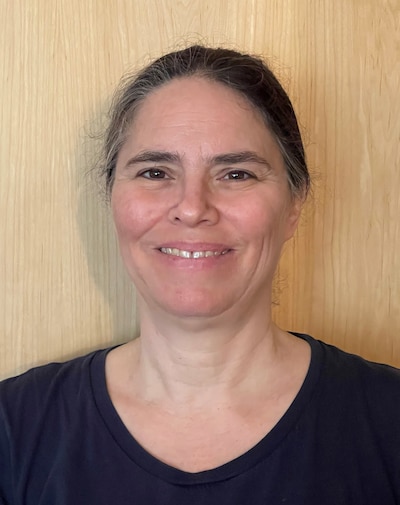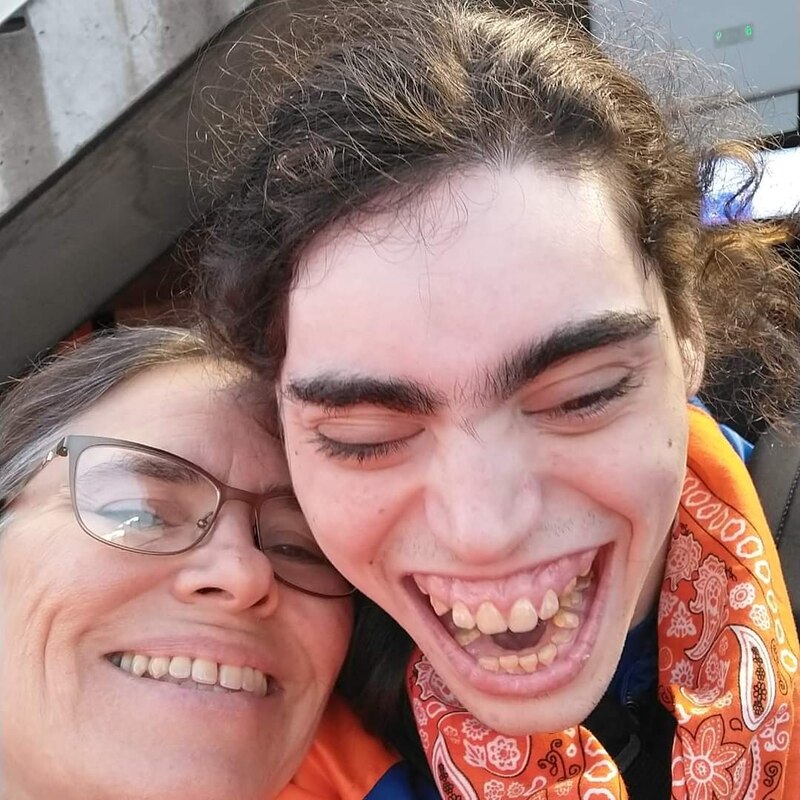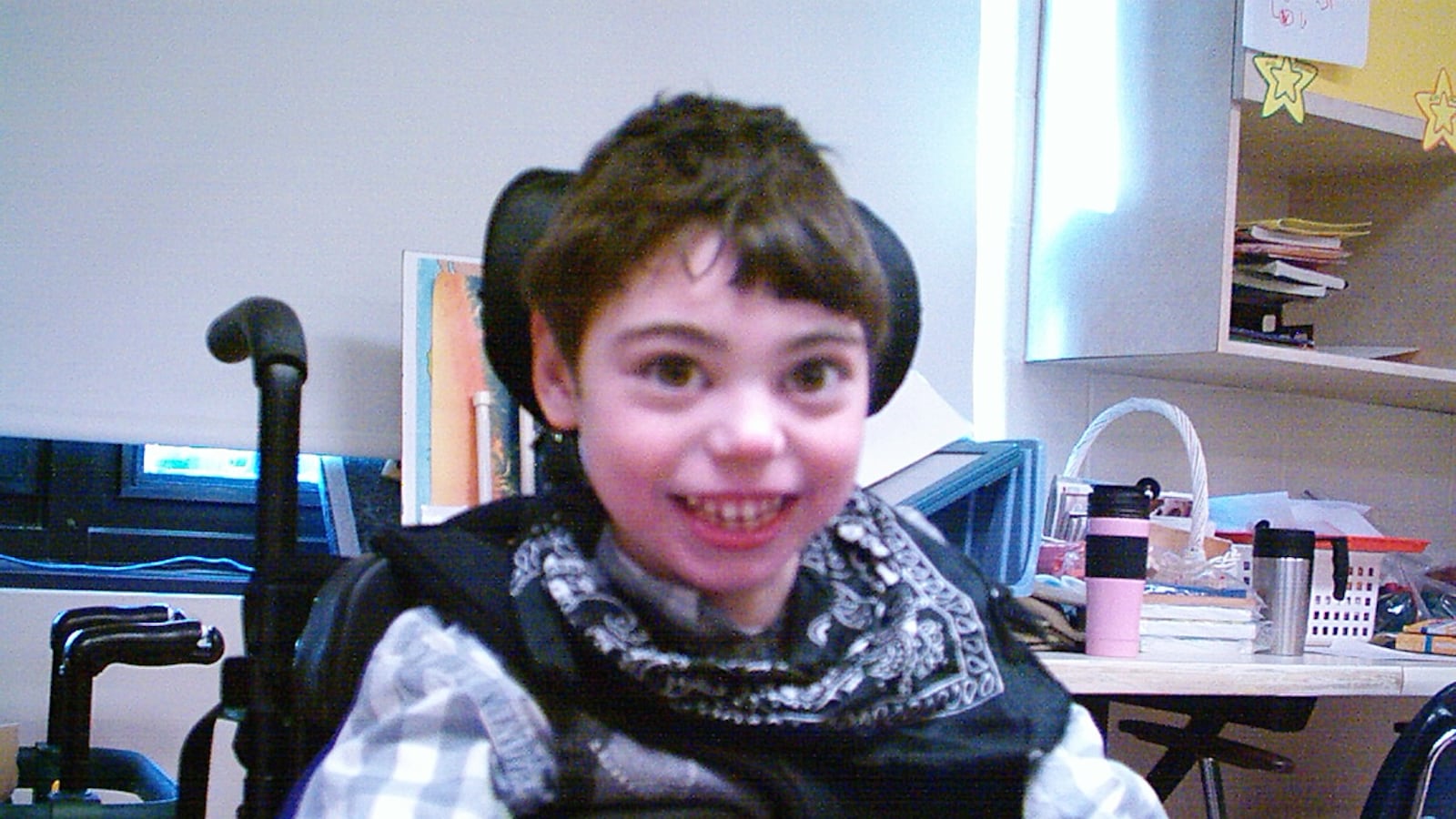Josh and I were excited, planning for a child. I was not a happy pregnant person, but at each appointment, I was assured that the baby was growing well. Each sonogram declared he was “perfect.” After an uneventful full-term birth, our son Abey was born 8 pounds, 8 ounces. Within four months we knew he had challenges. At a year old, Abey did not sit, eat, grab a toy, or look at my face.
We had not planned for Abey’s disabilities, but in the months and years that followed, we became well-versed in therapies, doctor’s appointments, feeding tubes, seizure medications, and wheelchairs. By the time Abey was ready for kindergarten, we realized that our school system had not planned for his disabilities either.

Abey was born 13 years to the day after the Americans with Disabilities Act, or ADA, was signed into law. When we started looking at kindergartens, we found that the school across the street was not accessible. Neither were any of the schools within walking distance from our Queens home. He would need to be bused to another neighborhood.
When we looked at schools in other neighborhoods, school staff said things like “You won’t be happy here” and “We can’t handle his needs.” Finally, after the city’s Committee on Special Education agreed that its schools could not provide him an appropriate education, Abey, my 5-year-old who could not speak, ended up on a bus, hours each day, to Nassau County. Between kindergarten and eighth grade, he spent some 3,500 hours commuting.
What did that mean for Abey, other than thousands of hours lost to busing? It meant no after-school activities, since the school bus would not bring him home. It meant very few playdates, since I would need to drive to and from Nassau anytime he was invited anywhere. It meant he didn’t have friends in the community where he lived, since he had no exposure to them in school.
What did that mean for our family? It meant that every parent-teacher conference or school event required that one of his parents miss half a day of work. It meant that a bus strike required us to drive him back and forth to Long Island, which could take hours and meant more time off work. It meant not having my sons, born two years apart, in the same school like all the other moms on my block. We were socially isolated and economically penalized by our school system because Abey was disabled.
Fast forward 15 years, and Abey is a junior at Columbia University, where he enrolled after graduating from Bard High School Early College Queens, a fully accessible high school just 20 minutes from home.
The school across the street where we initially hoped to send Abey to kindergarten still is not accessible, and neither are any of those in walking distance from our home. Another generation of students with physical disabilities is being denied access to their community schools.
When I realized that New York City’s public schools were woefully behind in ADA compliance, I set about understanding why. As with many problems, the root was money. The first time I looked at the accessibility of our schools, back in 2018, only about 18% of city public schools were fully accessible, according to the group Advocates for Children.

The education department’s 2015-2019 capital budget allocated $100 million to improve accessibility in schools, with an additional $50 million earmarked in 2019. That sounds like a lot of money, but only 14 inaccessible or partially accessible school buildings became fully accessible with those dollars, according to a city report. At another 13 school buildings, building accessibility was improved though not enough to make them fully accessible, the report shows.
At the rate they were going, it would have taken many generations for the education department’s 1,300 school buildings to reach full accessibility.
The solution was, and is, funding. Based on what the education department was able to accomplish with the 2015-2019 capital plan, I projected that the city needed to invest about $1 billion every five years for all schools to become fully accessible within 26 years. During the 2020-24 budget cycle, the city allocated $750 million, and by 2023, 31% of city schools were fully accessible, up 13 percentage points from five years earlier.
To continue toward a school system that is inclusive and compliant with federal law, Advocates for Children asked the city to allocate $1.25 billion for accessibility in the next budget cycle, which runs 2025-29. But this time around, the city has plans to spend only about two-thirds of that, $800 million, for accessibility. It may be tempting to point to New York City’s current financial strains and say, “We cannot afford that now; we will do it later.” I say that it has been more than 33 years since the ADA was passed, and we are catching up on work that should have been completed years ago.
I did not plan in advance for my disabled son. When he arrived, my husband and I put our emotional, mental, and financial resources into making sure he got what he needed. New York City did not know that my son would be disabled, but we all knew, and still know, that disabled children will continue to join our community and need to go to school. They need friends in the neighborhood, rather than being bused to other counties. Families like mine should not shoulder greater logistical and financial burdens than our neighbors with non-disabled children. Our city must plan, budget for, and fast-track accessible schools. Students and families demand it, depend on it, and deserve it.
Michelle Noris is a mom to three children educated through the New York City Public Schools and owner of Norfast Engineering PLLC.



